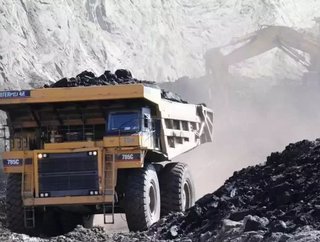The state of the copper-producing industry

The SNL Metals & Mining Research Group has just released Copper Discoveries, 1990-2014, the third of seven planned reports from its 2015 Strategies for Copper Reserves Replacement study, which analyzes reserves replacement by copper-producing companies worldwide, based on data found in SNL Metals & Mining's databases and through direct contact with major copper-producing companies.
• Related content: SNL Report: State of the Market--March quarter 2015
The report series begins with a review of copper exploration patterns — with particular attention to copper discoveries — followed by analysis of the acquisition of projects and companies with significant copper reserves. The found and acquired reserves are analyzed based on costs, the location of projects and their stage of development, and the types and headquarters locations of the companies involved. Twenty of the top copper-producers are profiled separately, and their group metrics are combined and analyzed to represent the industry as a whole. The study then looks forward by analyzing the pipeline of potentially producing copper projects, while a final overall analysis paints a comprehensive picture of the reserves replacement efforts of the copper-producing industry as a whole.

The first two reports, both currently online, are Copper Exploration Budgets, 2000-2014 and Copper M&A Activity, 2005-2014. The first draws on SNL's annual Corporate Exploration Strategies study for an in-depth analysis of industry-wide spending on copper exploration over the past 15 years.
Copper's perennial importance to the industry becomes evident by viewing copper exploration budgets in light of total nonferrous metals budgets. In 2010, the industry budgeted a total of US$11 billion for exploration. After almost doubling by 2012, the total budget returned to 2010 level again in 2014. Over those five years, the copper budget increased more or decreased less as a percentage year on year than the total budget; and more remarkably, copper's share of the total budget increased in each of the five years, even as budgets were shrinking — in 2014, copper accounted for fully a quarter of the industry's total budget, a 15-year high for the red metal.
The second report in the series, Copper M&A Activity, 2005-2014, leverages SNL's M&A database to analyze 10 years of project and company acquisitions (minimum US$10 million purchase price), where copper was the primary metal or formed a significant portion of the acquired value.

It is no surprise that acquiring companies pay more for copper in mineable reserves than they pay for resources, since reserves can either immediately increase a company's production, or add to its pipeline of potential production without the expenditure and time otherwise required to prove up reserves. The prices paid per pound for copper in reserves and copper in total reserves and resources generally moved in tandem from 2005 to 2009. However, they diverged sharply after the 2008-2009 financial crisis, with the reserves price soaring close to 50 cents per pound by 2011 — the highest price paid in the 10-year period — while the price paid for combined reserves and resources increased much more slowly. The divergence partly reflects most major producers' then current strategy of increasing production. With recovering copper prices seemingly headed for the stratosphere, adding mineable reserves seemed like a good investment at the time.
• Related content: [INFOGRAPHIC] The History and Uses of Copper
However, the copper price began declining in 2012, and angry investors began forcing the major companies to curb spending and focus on increasing value. As a result, M&A spending in 2013 dropped by three-quarters from a record US$30 billion in 2012, and the price paid for copper reserves fell to 30 cents per pound in 2013 — on par with the 10-year average through 2014. M&A activity revived somewhat in 2014, with the price paid for copper reserves perking up slightly and the total price paid in copper acquisitions jumping 45 percent from the 2013 price.
The latest report, Copper Discoveries, 1990-2014, is a detailed analysis of 201 copper discoveries over the past 25 years, each containing at least 500,000 tons of copper. The topics covered include the relationship between corporate exploration budgets and discovered copper, and separate sections for discoveries by year, by location (region and country), by company type and by classification as greenfields or brownfields.
Stay connected! Follow us on Twitter and like us on Facebook
- Gécamines & Ivanhoe Restart Kipushi Zinc-Copper-Silver MineSupply Chain & Operations
- First Quantum contracts with MECS to cut emissionsSupply Chain & Operations
- Report predicts a looming copper supply gapSupply Chain & Operations
- Chile details national lithium strategy amid global demandSupply Chain & Operations






